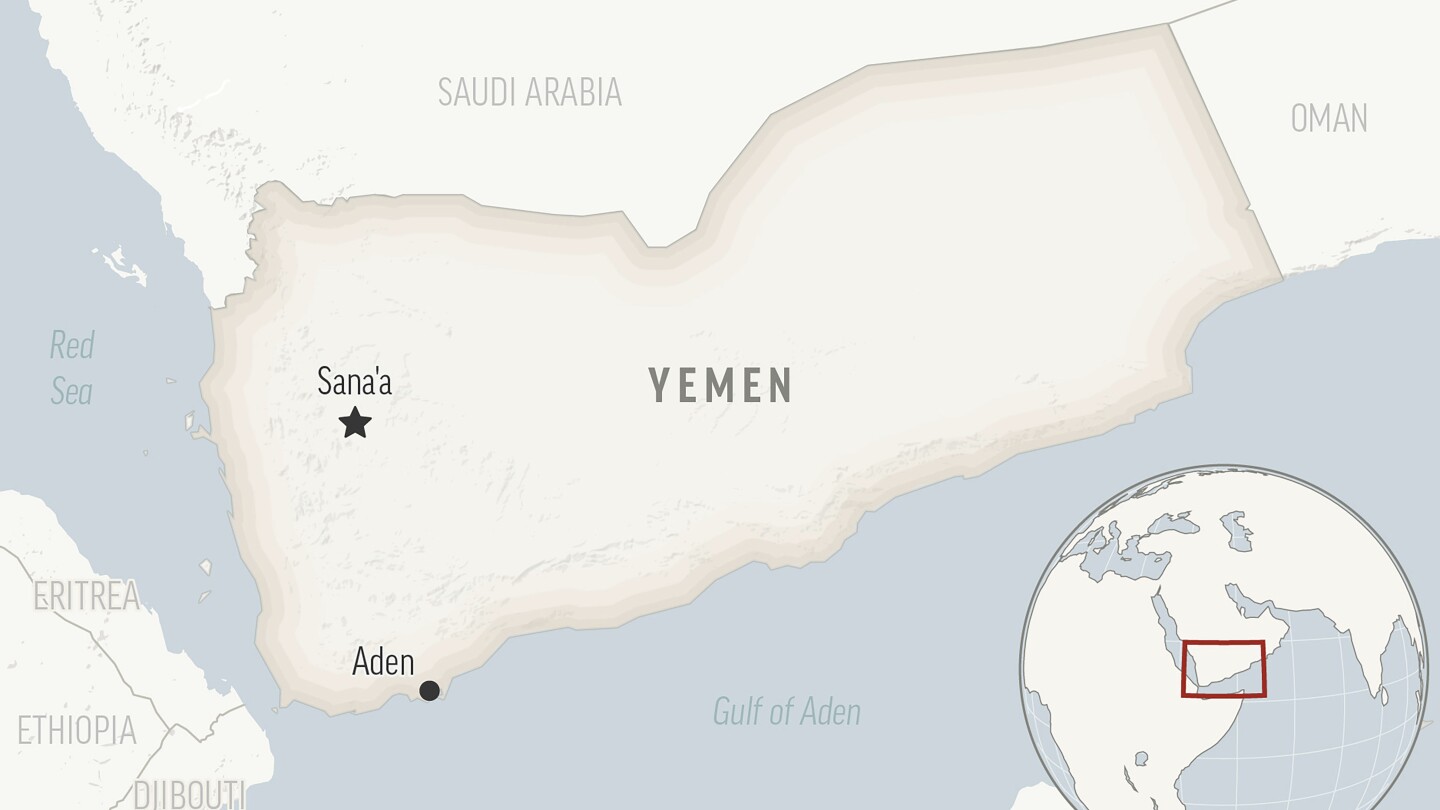CAIRO (AP) — Famine is looming in four Yemeni districts after instances of hunger have rapidly surged among children in areas controlled by the internationally recognized government, a report by international experts said.
All 117 districts in government-controlled areas are expected to suffer from “serious” levels of acute malnutrition. Among them, the four districts — Mawza and Mocha in Taiz province, and Hays and Khawkhah in Hodeida province — are projected to slip into famine between July and October this year, according to the Integrated Food Security Phase Classification, or IPC.
The report reflects the worsening food insecurity in the poorest Arab nation that plunged into civil war in 2014, when Yemen’s Iran-backed Houthi rebels took control of the capital, Sanaa, and much of the country’s north, forcing the government to flee to the south, then to Saudi Arabia.
A Saudi-led coalition entered the war in March 2015, backed at the time by the U.S., in an effort to restore the internationally recognized government to power. The war has killed more than 150,000 people including civilians and combatants, and in recent years deteriorated largely into a stalemate and caused one of the world’s worst humanitarian crises.
About half of the country’s population — or 18.2 million people — are in need of humanitarian aid this year, according to the United Nations.
The number of acutely malnourished children has increased by 34% compared to last year, the report said. They include more than 18,500 children under 5 who are projected to be severely malnourished by the end of this year, it said. Additionally, the report found about 223,000 pregnant and lactating women are expected to be malnourished in 2024.
“The report confirms an alarming trend of acute malnutrition for children in southern Yemen,” said the UNICEF representative to Yemen, Peter Hawkins. “To protect the most vulnerable women, girls and boys, an investment in and scale-up of prevention and treatment efforts are more critical than ever.”
The report attributed the sharp rise of malnutrition to the combined effects of cholera and measles outbreaks, high food insecurity, limited access to safe drinking water, economic decline and inadequate humanitarian aid — all are direct and indirect results of the decade-old war.
The IPC is a global partnership of 15 U.N. agencies and humanitarian organizations working in Yemen and funded by the European Union, the U.S. and the U.K.
A famine is declared in an area when one in five people or households severely lack food and face starvation and destitution that would ultimately lead to critical levels of acute malnutrition and death.
“These findings should be a wake-up call that lives are at stake,” said Pierre Honnorat, the World Food Program director in Yemen. “It is critical to step up support to the most vulnerable who could sink deeper into food insecurity and malnutrition if current low levels of humanitarian funding persist.”
The report didn’t address hunger conditions in the Houthi-controlled area apparently because of a lack of access. The rebels have in recent months launched a crackdown on United Nations agencies and aid groups, detaining dozens of workers.
Addressing the U.N. Security Council earlier this month, Lisa Doughten, a senior U.N. humanitarian official, said the Houthi measures negatively impacted aid operations in areas under their control.
“The environment in these areas is growing more constrained at a time when humanitarians are already struggling to meet the needs of millions of people across the country,” she said.

